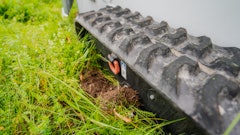What started out as a regional fuel additive company addressing the needs of heavy fuel users has evolved into K100, a fuel additive with a larger niche that new ownership is ready to take national. Formerly Reaction Labs, started by Alice Otto, the fuel additive has evolved since its start in 1956 and promises many benefits for gasoline and diesel engines.
“Otto and her husband wanted to improve the quality of fuel with some cleaners and stabilizers and added lubricity,” says Loretto Thompson, vice president of sales and marketing for K100. “With the advent of ethanol, the product is even more powerful.”
E15 and the water woes
Water acts as gasoline’s worst enemy. Ethanol and gasoline can exist happily together until the moment water is introduced. Many things in the atmosphere can lead to water in a gas tank. Condensation in the tank, and any water sucked into the ventilated engine from the air on a rainy or humid day, has the potential to cause huge problems.
“It only takes one half of one percent by volume at room temperature to start phase separation,” explains Thompson. “It takes even less to start phase separation if it is below room temperature.”
When the ethanol “grabs” the water and takes it to the bottom of the tank, you have phase-separated fuel. In the bottom of the tank is ethanol, and on the top is low-octane fuel.
“That’s what is killing these guys’ machines,” Thompson laments. “The water rots out the bottoms of the tank and damages engine performance.”
Prevent and repair
Enter K100. The K100 fuel additive works to separate the water molecules from each other and isolate them. It encapsulates each individual water molecule as a combustible compound that then goes back up into suspension and burns clean through the system. The water is no longer present.
“A lot of other products treat the symptom but don’t treat the cause. Many of our competitors don’t absorb the water because they are petroleum-based, and water and oil don’t mix. They will clean and lubricate, but they can’t adjust the water,” says Thompson. “We are going to get rid of water. The water is the real problem.”
Mike Shelton, of Shelton's Total Lawn Care in Louisville, KY, has been an avid K100 user for almost three years. After a mower he had purchased only six months prior started running poorly, his dealer suggested trying K100.
“Within a couple hours it started running really well,” says Shelton. “Ever since then I use it in every piece of equipment I own—including vehicles.”
Thompson advises that contractors not wait until they experience a performance issue to add K100 to the tank. Prevention can go a long way in helping avoid the need to rebuild a carburetor.
“We recommend it as a preventative measure or maintenance for the fuel,” she explains. “You can’t over treat but you can undertreat. If you undertreat it is simply not going to work. If you put a little extra in you have those added benefits other than just repairing the water.”
Higher-octane fuel is one of those added benefits she speaks of. According to Thompson, the addition of K100 helps fuel achieve octane levels that are two points higher than normal. The higher the octane, the better the engine’s performance.
Small doses pack powerful punch
It doesn’t take much of the product to achieve those benefits. The company advises using half an ounce per gallon of fuel. One eight-ounce bottle of K100 sold for $7.99 treats 16 gallons of gas. And if you are running through fuel quickly—like in your busy season—you could get away with using even less.
“If you are really running through fuel regularly I wouldn’t do it every single time,” advises Thompson. “Dose it up pretty good the first time. Once that treated fuel has run through the equipment and got it into shape, your next fill-up it might not be necessary to do. Consider doing it every other fill-up once your system has initially been treated.”
Thompson suggests fitting K100 into your regular maintenance schedule. At the start of the season, treat the fuel that goes into every single piece of equipment. Keep the benefits by retreating on a schedule. Thompson and Shelton both add K100 to their motor vehicles as well. Thompson suggests a bottle in the tank with each oil change to improve mileage and towing capabilities.
Shelton adds a little K100 to his tanks regularly—and especially when winterizing equipment before storage. He says a little investment up front saves him on the potential costs in the shop without it. He also sees additional savings on fuel costs because equipment is running more efficiently.
“I only spend about $50-60 a year on it, but every piece of equipment I have runs well,” Shelton explains. “I haven’t had any engine problems since using it. Before I started using it, I always had problems with gas lines, and replacing the carburetor became common practice. I’m hoping it will extend the life of my machines.”



















